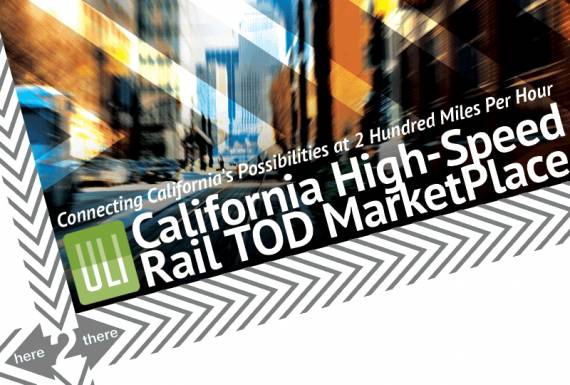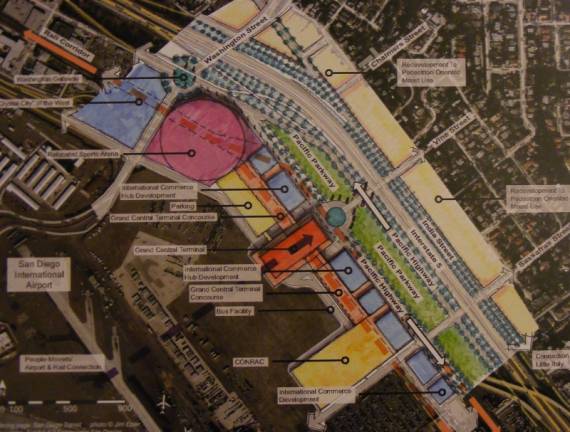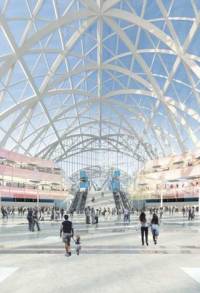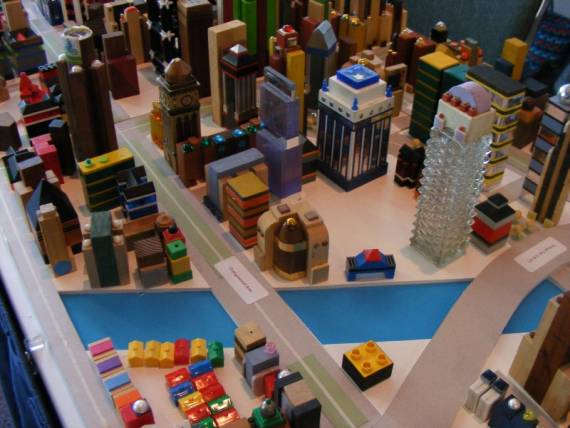High Speed Rail Conference: Station Motivation
9:45 AM PDT on September 24, 2010

The story of high speed rail is one of extremes. The thought of high speed trains whizzing up and down the state is enough to induce a futuristic giddiness - and carry a plurality of voters in 2008's bond measure. But for some, the train line will be a community crushing blight, a noisy Berlin Wall carving deep into suburban utopia. So far, opposition to the high speed train has mainly been confined to Northern California, but that's probably because LA's NIMBYs are too busy suing the Expo Line.
And thus the Urban Land Institute came to its inaugural California High Speed Rail TOD conference with recognition for the perils of HSR development, but nonetheless intensely focused on the glories afforded by a shimmering new high speed rail system for California.
The event gravitated toward large-scale station plans; design teams from the massive stations in San Francisco, San Jose, Anaheim, and San Diego were on-hand (for this post, I'll stick to the stations in SoCal). Glossy renderings hung proudly on architecture firms' easels and presenters' slide shows, bright visions to see us through the difficulties of construction.
The day began with Curt Pringle, California HSR Authority Chair and Mayor of Anaheim. After a few minutes of touting his development accomplishments in Anaheim's Platinum Triangle, he laid out some of the specifics of California's HSR plan. He reminded us that despite the tendency to get "bogged down by the news of lawsuits", people are increasingly seeing HSR "not as a vision but a reality." Next up were Andreas Heym and Jeff Heller, with presentations on the accomplishments of the French and Chinese HSR systems.But back in California, Kathleen Garcia and Wallace Roberts of San Diego's proposed Lindbergh Field train station/airport multimodal transit center had plenty to say. It appears that they are at the head of an ambitious project to build a new station and reshape the surrounding neighborhood, and are working to integrate the station into a proposed restructuring of Lindbergh's check-in center. The center would be relocated to the north side of the airport and be connected with boarding areas, which would remain on the southern side, with an underground tramway. This new center would then be easy to connect to a new high speed train station, along with the Coaster, Amtrak, and Trolley stops. It's an interesting strategy: if the train doesn't go to the airport, bring the airport to the train. Maybe we should try that with LAX.

In addition to a new train station, designers plan to reshape the street grid, turning Pacific Highway into a "great gateway" into San Diego. There's even talk about sinking Interstate 5 below grade level, although one of the panelists I spoke with afterward admitted that that's probably not going to happen. There are also plans to for transit oriented development, or as the panelists prefer to call it, transit integrated development (TID!). One of the speakers lamented that currently "this is a challenged area". While these new plans would do a lot to counter that, it would seem the biggest challenge is connecting this grandiose new station to the center of San Diego. It appears that this station is intended to supplant a HSR stop at the current Amtrak terminal in the middle of downtown SD, and though there is some loose talk of the train being extended as far as the Mexican border, even that plan wouldn't include a station in the center of town. This would be a huge nuisance to riders. San Diego should either rethink its endgame for the end of the HSR. Or, as it did with the airport, bring the city to the station by revitalizing the industrial area all the way to the beginning of downtown.

Though Anaheim's ARTIC train station didn't receive a prime spot on the schedule, some of the designers of the project had set up tables near the entrance to the conference hall. I talked to a representative from Arrellano Associates who talked about some of the details of the project. The new station features a soaring design and a massive interior, which is odd considering that its initial train service will only be with Metrolink. Though it will eventually house the high speed line and possibly a maglev to Vegas, none of that looks likely to be done by ARTIC's projected 2013 opening - hopefully it won't get too cold a reception. The terminal will also house an extensive bus hub, and even a beautification project that will help connect the station to the nearby Santa Ana river and potentially include bicycle projects, though Arrellano Associates didn't know exactly what kind of bike projects were being considered. It's great that Anaheim is getting such a substantial project, though the fact that the whole project exists in the shadow of the 57 freeway and is billed as a place where "freeways... and the rail transit system converge" may put a damper on the enthusiasm.
Throughout the whole convention, I couldn't help but wonder if there were any prospects for a grand, shiny set of HSR-related developments closer to LA. Katherine Perez, of the ULI's LA bureau, had some background. Though something definitely needs to be done with Union Station, she felt that any design would have to respect the history of the area. On top of that, Metro is currently negotiating to take full control of the station; currently, they don't own the entryway and ticketing area. The ULI even tried to get Metro to appear at this convention, but they had made so little progress that there was nothing for them to report. So the ULI is taking matters into their own hands: they're staging their own design competition for Union Station, with the winning entry hopefully influencing the final design picked by Metro and the HSR authority.

But you don't have to be an architect or urban planner to get involved in the design process. RailLA was at the conference, showcasing the results of their community input project for Union Station. They gave participants a square foot foam board and asked them to come up with a James Rojas style model of what they wanted for the area, cataloging the results. They also had a large interactive model for Anaheim that guests were timidly tinkering with.
Though the same doubts remained at the end of the day, the enthusiasm infused from the advancement of planning left everyone a bit more optimistic that they would one day be zipping up and down the state in a gleaming new high speed trains.
Stay in touch
Sign up for our free newsletter
More from Streetsblog Los Angeles
Automated Enforcement Coming Soon to a Bus Lane Near You
Metro is already installing on-bus cameras. Soon comes testing, outreach, then warning tickets. Wilshire/5th/6th and La Brea will be the first bus routes in the bus lane enforcement program.
Metro Looks to Approve Torrance C Line Extension Alignment
Selecting the relatively low-cost hybrid alternative should help the oft-delayed South Bay C Line extension move a step closer to reality




